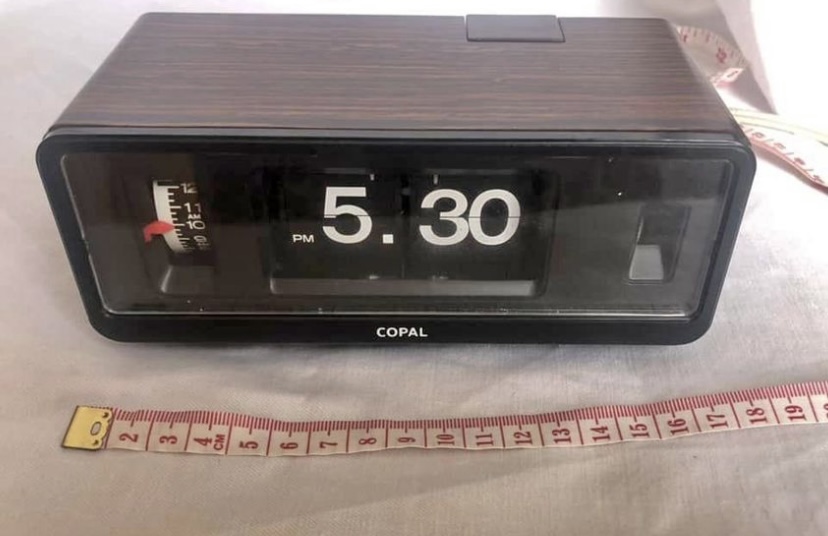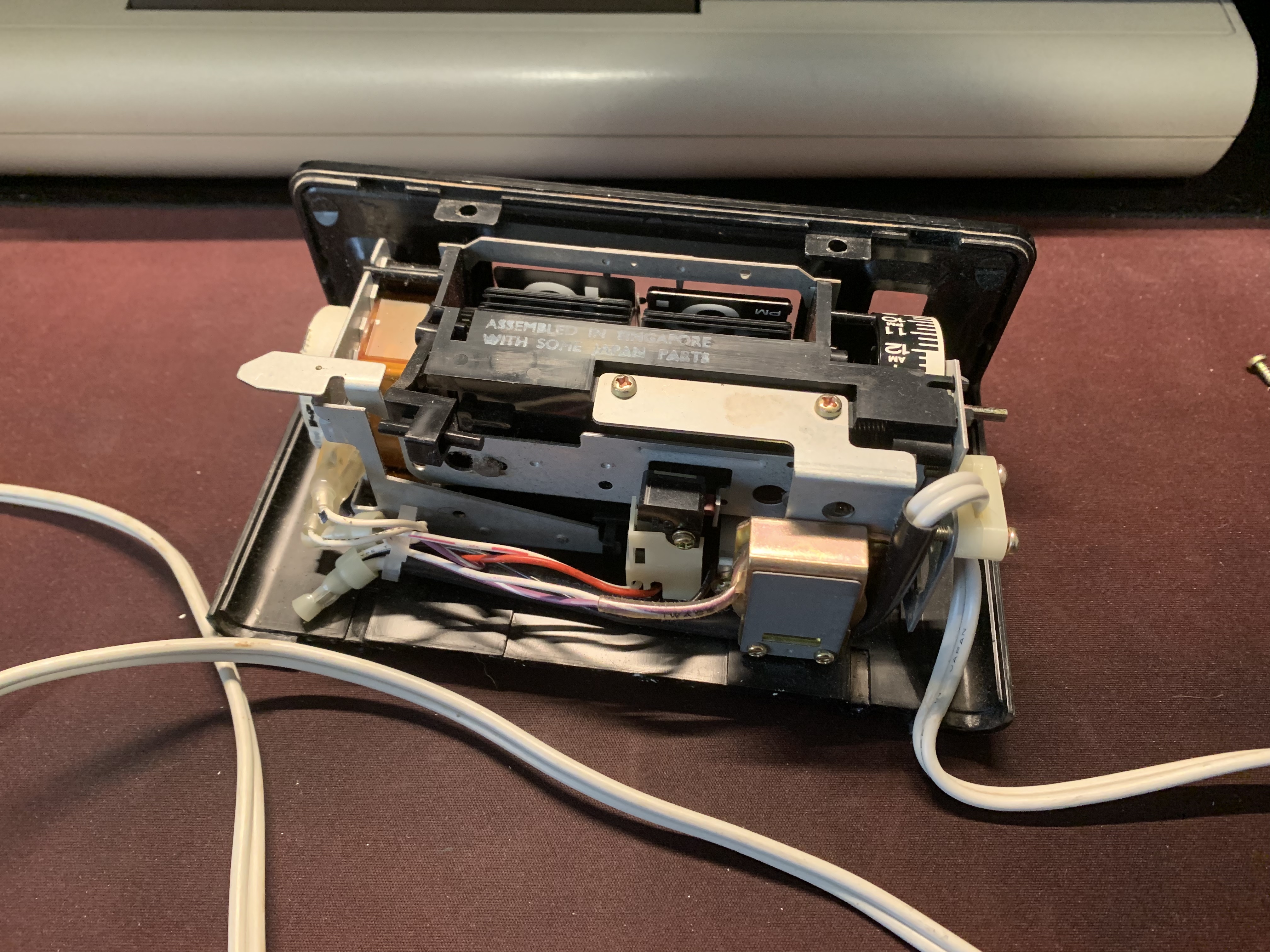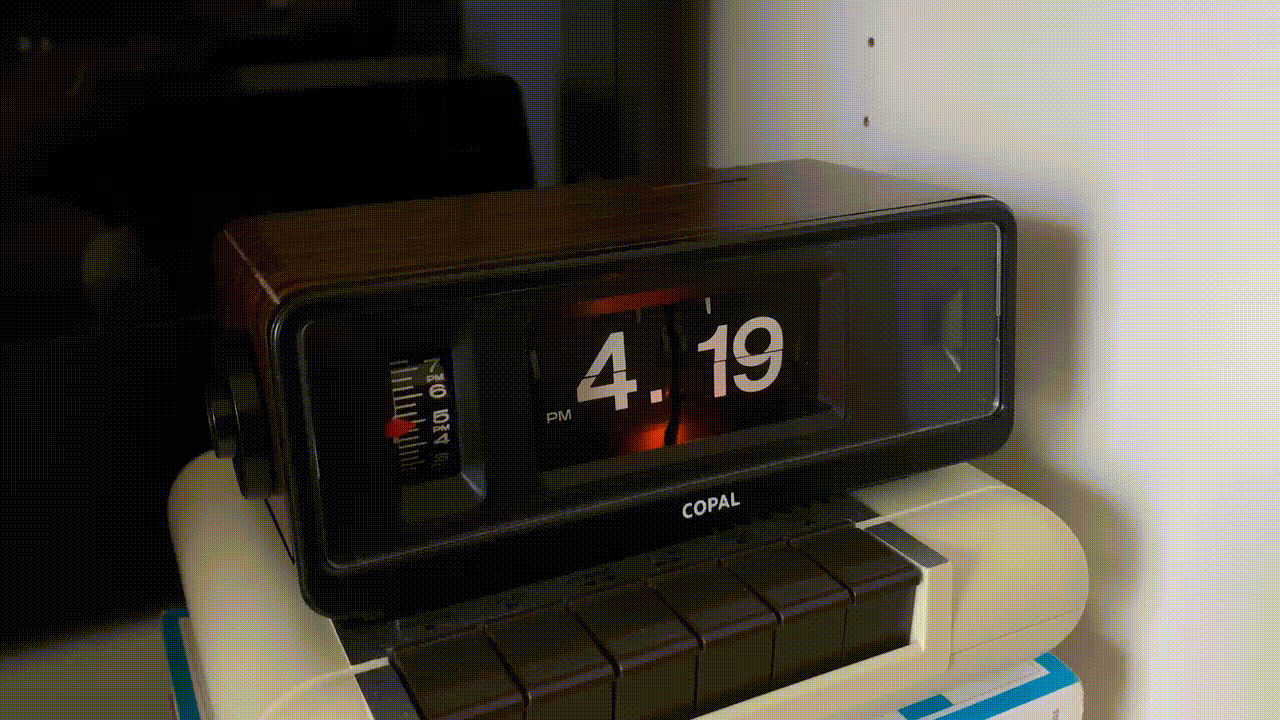You’ve probably seen a flip clock before; there’s one beside Marty McFly’s bed in Back to the Future. Most of them have stylish white-on-black numerals and boxy bread loaf cases that I just adore. Some even have a little red filament which glows like hot coals after a fire. This makes it easier to count the dwindling hours before morning. While I knew I wasn’t the only fan of these clocks, I never expected to find an entire community dedicated to them.
First established in 2014, Flip Clock Fans is a forum dedicated to restoring and collecting flip clocks. Both the forum and the accompanying YouTube channel are run by Mackey Hensley, a flip clock aficionado with encyclopaedic knowledge concerning flip clock history and restoration. Hensley has written dozens of articles, with topics ranging from the first ever flip clock to an interview with an artist who deconstructed one. From him I learned the flip clock was first conceived by Josef Pallweber all the way back in 1890. Later, it was produced by the Lenzkirch Clock Factory around 1894, 9 years prior to Marty travelling back to save Doc in Back to the Future III.
In loving memory
Pinning down the history of flip clocks can be very difficult - primarily because no one thought to keep a record of such things…
- Mackey Hensley, The Historical Significance of the Köhler horizontal cylinder flip clock
It’s clear that Hensley puts a lot of love into these articles and I love that he does. They’re well researched and a lot of fun to read. This made it all the more alarming when Flip Clock Fans went down in March. While the forum was gone, the site still had a link for contacting Hensley, so I sent him an email asking him what had happened.
By that point, I was fairly stuck. I wanted to learn more before writing this post, but my main source of information was now gone. While I did find an outdated version of the forum on the Wayback Machine, alternative sources were scarce. Even the Wikipedia entry on them was brief. It was true testament to the work Hensley and the flip clock fans had done to compile information about these clocks.
Coincidentally, I was struck by my own craving for knowledge and the impermanence of it all. It’s very easy to forget how spoiled we are to live with the Internet. It usually takes us a matter of seconds to find what we want, but this time I found nothing. Worse than that, I found the absence of what I once knew was there. As privileged as we are, our knowledge is only ever fleeting. It’s an ongoing effort to preserve what we have, and taking up this task are unsung heroes: the archivists, historians and preservers.
A day later, Hensley sent me his reply which explained there was some serious drama on the forum which led to him shutting down the site. However, he said the site was online again, much to my delight.
Fixing a flip clock
Before buying one, I watched Hensley’s videos to judge how hard it would be to fix a broken model. The faulty clocks were substantially cheaper than the working ones, so I’d buy one of those if fixing them was straightforward. From the videos, it didn’t seem too difficult. Most of the clocks just needed cleaning and lubrication. At worst, soldering was involved, but I’ve done plenty of that. To my luck, I found one on Facebook Marketplace for $35 AUD. The listing said it had suddenly stopped working, but otherwise seemed alright. It looked good from the photos, so I decided to buy it.



The pictures as originally listed. The clock itself is a Copal Caslon 205. This model has an alarm function and a faux-wood pattern. The left window shows the alarm time, the right shows whether the motor is spinning.
Once the clock arrived, I plugged it in and waited for a couple minutes. Unsurprisingly, nothing happened. However, I did notice a low humming sound and it wasn’t the glowing light at the front. Next, I pulled off the case and found small flecks of papery debris scattered throughout the internals. I was able to blow most of this away, but I had to use a small brush to remove the rest. After it was mostly clean, I located the source of the humming: it was the motor that turns the tiles.

Rear view of inside the clock.
From reading one of Hensley’s articles, I learned that these motors rely on the mains frequency, also known as utility frequency, to keep time. In most countries, the frequency is either 50 or 60Hz, meaning the electrical current changes direction 50 to 60 times per second. Usually, the frequency is kept constant but occasionally there will be a small deviation, causing these types of appliances to slow down momentarily. While this isn’t ideal for time keeping devices, I still think they’re pretty neat. My motor in particular is a Copal II, designed and manufactured in Japan during the 1970s.
Being about 50 years old, the lubricant inside can become crusty and will inhibit the motor. Since I couldn’t see any obstructions inside the gearbox, I figured this might be why it wasn’t moving. To dissolve the old lubricant, I first unplugged the clock and sprayed some isopropyl alcohol into the axle exposed on face of the motor. To my surprise, a bunch of papery gunk came flowing out of the wheel. This seemed to be the same stuff I brushed away initially. Later, I learned the paper was once a patterned sticker on the motor wheel that had long since disintegrated. The pattern seems to be there to help see the motor spinning when viewed through the small window at the front of the case.
After leaving the motor to dry for a couple hours, I followed Hensley’s flip clock oiling video to apply mechanical lubricant to the axle. The specific lubricant he used was expensive to import, so I used a cheaper brand I found on Amazon. Next, I plugged the clock in hoping it see it spin, but the motor wouldn’t budge. Luckily, all that it needed was a small nudge and off it went. It’s been working ever since and has kept time pretty well.


OUTATIME
I really like these little clocks, and it’s clear that I’m not the only one. Hensley and the folks at Flip Clock Fans have really done an excellent job in preserving and archiving information about them. If it weren’t for them, I wouldn’t have tried restoring one myself. If you enjoyed reading this post, go have a read of their articles. Maybe they will inspire you to write about your own favourite little gizmos.